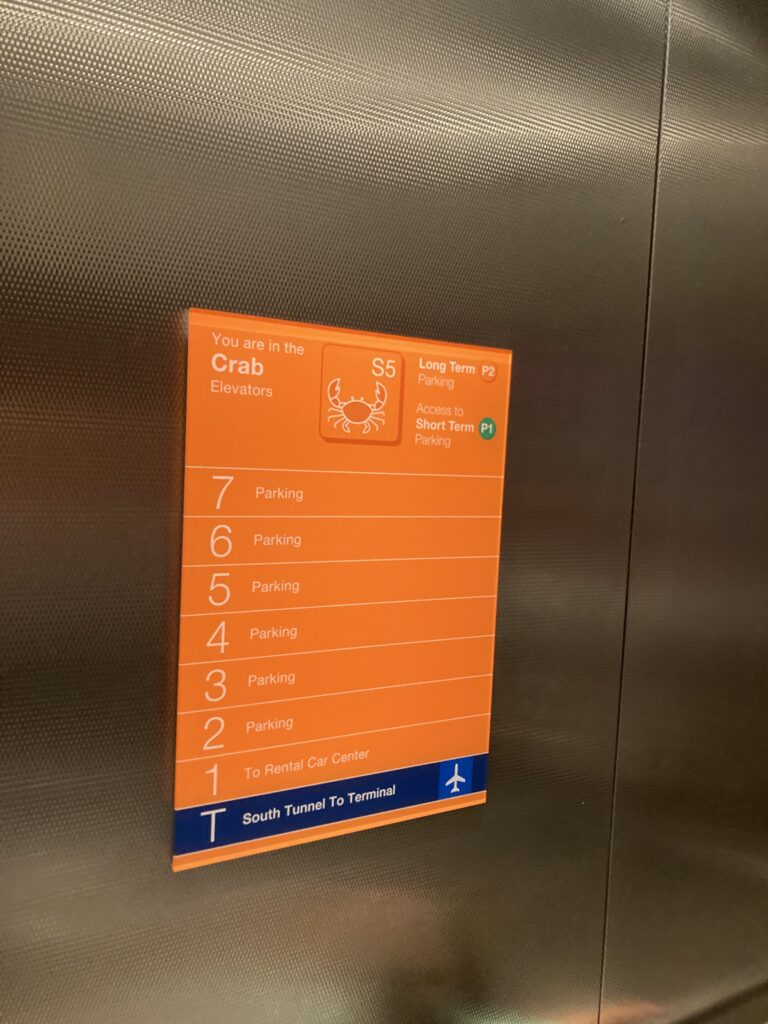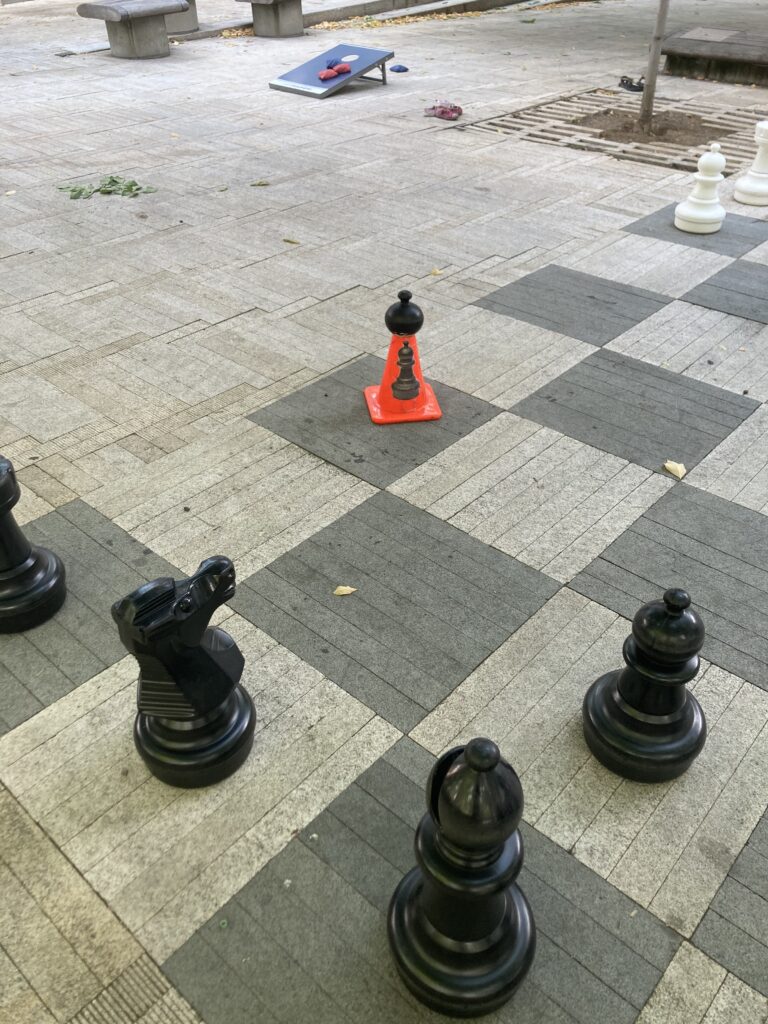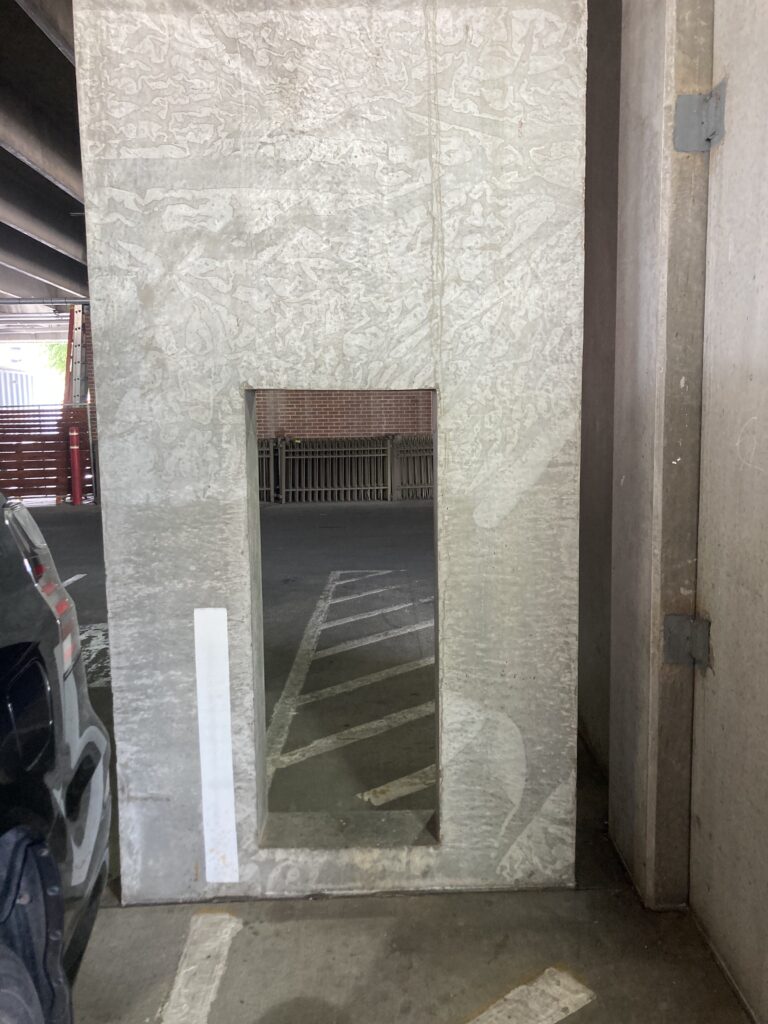
‘Jim’s Lightly Used Mannequin Outlet’ is a business that suffers for the specificity with which it describes its wares. I noticed it right away in a sign at the front that claims ‘NONE OF OUR MANNEQUINS HAVE BEEN USED FOR SEXUAL PURPOSES (verified to the best of our ability)’ and if that fine print wasn’t quite enough, a second hastily scrawled sign attached indicates ‘All fringe cases have been marked.’
I notice this tendency to overshare again in the follow-up signs inside. One example: ‘This mannequin was acquired from an independent lingerie vendor and contains wear marks on the crotch that are in line with consistent dressing/undressing but also there is a stain. Further discounted -15%.’
“Hey!” Someone, maybe Jim, is watching me from across the aisle.
I look behind me in case I’m mistaken but see only the collected and lifeless crowd of the mannequins. “Yeah?”
“No loitering near the sex figures.”
“I was just reading the tag.”
Jim stares me down so I move on.
‘If you visit ‘Jim’s Lightly Used Mannequin Outlet’ you may remark that Jim doesn’t seem particularly keen to actually sell anything- that his hostility indicates a reluctance to part with any of the many, many female forms that gather in this, one of the countries dark corners. You would not be the first to think this.
Public records suggest he has tried many times to have the store legally transformed into a church and has been rejected because he is unwilling or unable to describe exactly the sort of worship he plans to conduct. Not unlike the subjects of his mania, the shape is there, but the details are scant.’
Jim tries to fool me several times by dressing in a beige zentai suit and posing as a mannequin himself. He is not model-shaped, however, and I begin to suspect he likes being caught. Maybe he wants me to accuse him of something so that he can angrily throw me out. I try my best to ignore the whole situation and feign interest in purchasing several highly priced models, but this only fuels a sort of hysteria that I sense building in the man.
He tries to convince me to buy from a cart of miscellaneous limbs and panics when I pull one from the bottom, insisting it isn’t supposed to be included among the sale items and that it may have been ‘contaminated by the touch of a man.’ Over the next half hour, he convinces himself that I was the man that contaminated it, most likely, and I’m back to claim ‘my prize’ in front of him.
I’ve run from dangerous places and I’ve been chased out, but ‘Jim’s’ stands as the only Wayside destination where I’ve been asked to leave.
-traveler
‘At least one ‘Yowling Cat’ has been installed in every state, though two are known to exist in Kansas and the pattern break suggests there are more yet to be discovered. They are not live cats but they sound real and, from the ground, they tend to look real as well. A typical ‘Yowling Cat’ is perched somewhere high enough to be dangerous but accessible enough to be possible to anybody with a healthy body.
They are placed to be tempting.
The ‘Cats’ yowl mournfully. The rhythm is intermittent by default, the each ‘Cat’ has its unique ‘song.’ When a ‘Yowling Cat’ senses humans nearby, however, it grows louder and more demanding. Only one ‘Yowling Cat’ has been recovered and dissected and from it we know that they are equipped with audio sensors only, though this specimen seemed to be added to a local wireless network and may have had more sensory access within the network. The rest of the ‘Cats’ have disintegrated upon retrieval, a clever self-destruction that’s made them difficult to faithfully reverse engineer.
It’s given the authorities a reason to treat them like bombs and the subsequent videos of bomb squads carefully climbing trees only to discover real, living cats at the top have gone viral for the sheer stupidity-making of the situation.
Maybe this is their purpose. We don’t know.
‘The Yowling Cats’ incorporate a great deal of dead cat into the design, which is unfortunate, but it does add a certain melancholy.
-an excerpt, Autumn by the Wayside
‘Enshrined into the constitution but largely kept from the public eye is ‘The Great American Burn-Pit,’ a tradition that is at once reviled and sustained by the same Neo-Christian demographic that spurns and espouses forgiveness. A remnant of the Revolutionary War, federal regulations state that anything burned in ‘The Pit’ is legally nullified. Originally meant to entice British Loyalists to join the independent Americans, ‘The Great American Burn-Pit is now largely filled with felony evidence, including the occasional instance of human remains that somehow make it past growing crowds of police and federal investigators who operate something like a tactical game of ‘Red Rover,’ attempting to catch the break in their case before it is swept permanently from the table.’
I don’t know how anybody makes it past the police on a normal day. ‘The Great American Burn-Pit’ is thick with law enforcement, and I say this understanding that at least a third of the people in civilian clothes are likely also undercover cops. A frustrated crowd surrounds them, hurling insults and sometimes surging ahead in a way that makes me wonder if anyone has ever slipped backward into the fire, a homicide for an instant before it lapses into an accident with no legal ramifications.
A man in the crowd attempts to throw something over the police and into the pit. The item, a balled-up, bloodied piece of cloth strikes the handle of a pool net, thrust up from a woman in an FBI cap. It unfurls and the agents dogpile it. The man tries to run but they chase him down. Several more items are burned while attention is drawn to this incident. The man, led away, claims the original throw was a decoy.
Seems reasonable, but it isn’t my fight.
I’ve read that the last mass-burning was a spectacle. Several hundred pounds of narcotics were haphazardly launched into the fire. The law enforcement contingent became stoned and paranoid. They fired on the civilians, killing dozens and, upon sobering up, shoved the bodies into the pit.
No charges filed.
-traveler
Nobody but the rich call it ‘The Ocean of Grass’ but that is the name on your given map provider. The rich have made sure of that. Those travelers looking for directions on the road should ask after ‘The Lawn.’ Its colloquial name lands much nearer to the sites intended purpose. This is not an ocean, vast enough to be open to the public. It’s not made to be beautiful, though it is. ‘The Lawn’ is a farm and, outside of the rich, only those who tend it are allowed to enjoy its splendor.
‘The Lawn’ consists of a species of grass specific to its 50 or so acres and available nowhere else. The grass is lush green and soft, even when cut. It’s hypoallergenic and poisonous to common pests. It grows slowly and has proven to be resistant to droughts and insects and extremes of heat. The only thing that kills the grass of ‘The Lawn’ is time and that time is exactly one year. This is a feature of a tailored and copyright-protected genetic code. The rich don’t really buy turf from ‘The Ocean of Grass.’ They subscribe.
It takes work to tend ‘The Lawn’ and that work is largely donated. Enthusiasts volunteer to mow just for the sake of saying they have sailed across ‘The Ocean of Grass’ on one of its proprietary mowers. Some have even stolen short moments of peace, slipping off the mowers to lie in the field.
The mowers tend to note this quickly and these volunteers are banned. Testimonials indicate that the turf is absolutely worth it, for anyone who can pay the price.
-an excerpt, Autumn by the Wayside.
My interactions with ghosts have been largely underwhelming. They are like tissue paper in the violent churn of the universe, lost and perpetually on the verge of dissolution. Those encounters that rise above passivity are always dangerous, but I don’t take it personally. I have to assume it’s just a result of the system- in order to exact change on the physical world, their movements have to be crude and hard and pointed. Like neglected toddlers, lashing out is the only means by which they garner attention. And like toddlers, we mostly misunderstand.
It’s not like only angry people are born. And it’s not like only angry people die.
‘Nobody would be particularly surprised to hear that ‘Ghosts in Amber’ is a farce. Despite all the delicate lighting and, to some extent, because of the piped-in ethereal music, the whole experience seems a little forced. Angela Mitter, owner of ‘Ghosts in Amber’ (and producer of said ethereal music) has embraced this difficulty in interviews.
“The afterlife has long been the domain of mediums and psychics and the unfortunate few who stumble, unwittingly, into the realm beyond. ‘Ghosts in Amber’ is the opposite. Accessible. Safe. What I own is not a collection. It is not a museum or a zoo. It is a place for reaching out for the untouchable. The ambience is a bridge, not a veil.”
Some have pointed out that, in a previous life, Mitter was a failed musician, producing the same sort of music that not plays on loop among these lifeless pieces of sap. This criticism is largely unnecessary. Mitter has transcended the trope of the desperate artist who attempts to create a false context for herself, selling her CDs as an epilogue to the short experience ‘Ghosts in Amber’ has to offer.
She gives her CDs away to whoever is willing to take them.’
I prepared myself for something much worse. The music is melancholy synth. A long track or several that bleed into each other. I think it helps liven the experience, though I’ve been accused of rooting for perpetual underdogs in the past.
The ‘Ghosts’ are underwhelming, nevertheless. The amber specimens contain bubbles, only some of which look like they might bear a resemblance to something of humanity. A plaque details the origins of each, as well as a series of indications that offer proof that the bubble is more than just air. Strange electromagnetic waves. Uncanny origin stories. Several pieces of amber were removed from inside the bodies of the deceased, but the fact that this seems to have been a practice (or an MO) is not addressed.
One piece of amber toward the back is visibly cracked. Air moves freely within the case and the split golden bubble. I wonder if I should mention it to Mitter, who hums quietly at a desk in the front, listening to the playback of a track she is near completing. Something clatters in the corner, so quiet that she doesn’t hear, and I decide it’s best not to pry.
I take my CD and leave her to it.
-traveler
Rear View Mirror
- November 2025
- October 2025
- September 2025
- August 2025
- July 2025
- June 2025
- May 2025
- April 2025
- March 2025
- February 2025
- January 2025
- December 2024
- November 2024
- October 2024
- September 2024
- August 2024
- July 2024
- June 2024
- May 2024
- April 2024
- March 2024
- February 2024
- January 2024
- December 2023
- November 2023
- October 2023
- September 2023
- August 2023
- July 2023
- June 2023
- May 2023
- April 2023
- March 2023
- February 2023
- January 2023
- December 2022
- November 2022
- October 2022
- September 2022
- August 2022
- July 2022
- June 2022
- May 2022
- April 2022
- March 2022
- February 2022
- January 2022
- December 2021
- November 2021
- October 2021
- September 2021
- August 2021
- July 2021
- June 2021
- May 2021
- April 2021
- March 2021
- February 2021
- January 2021
- December 2020
- November 2020
- October 2020
- September 2020
- August 2020
- July 2020
- June 2020
- May 2020
- April 2020
- March 2020
- February 2020
- January 2020
- December 2019
- November 2019
- October 2019
- September 2019
- August 2019
- July 2019
- June 2019
- May 2019
- April 2019
- March 2019
- February 2019
- January 2019
- December 2018
- November 2018
- October 2018
- September 2018
- August 2018
- July 2018
- June 2018
- May 2018
- April 2018
- March 2018
- February 2018
- January 2018
- December 2017
- November 2017
- October 2017
- September 2017
- August 2017
- July 2017
- June 2017
- May 2017
- April 2017
- March 2017
- February 2017
- January 2017
- December 2016
- November 2016
- October 2016
- September 2016
- August 2016




